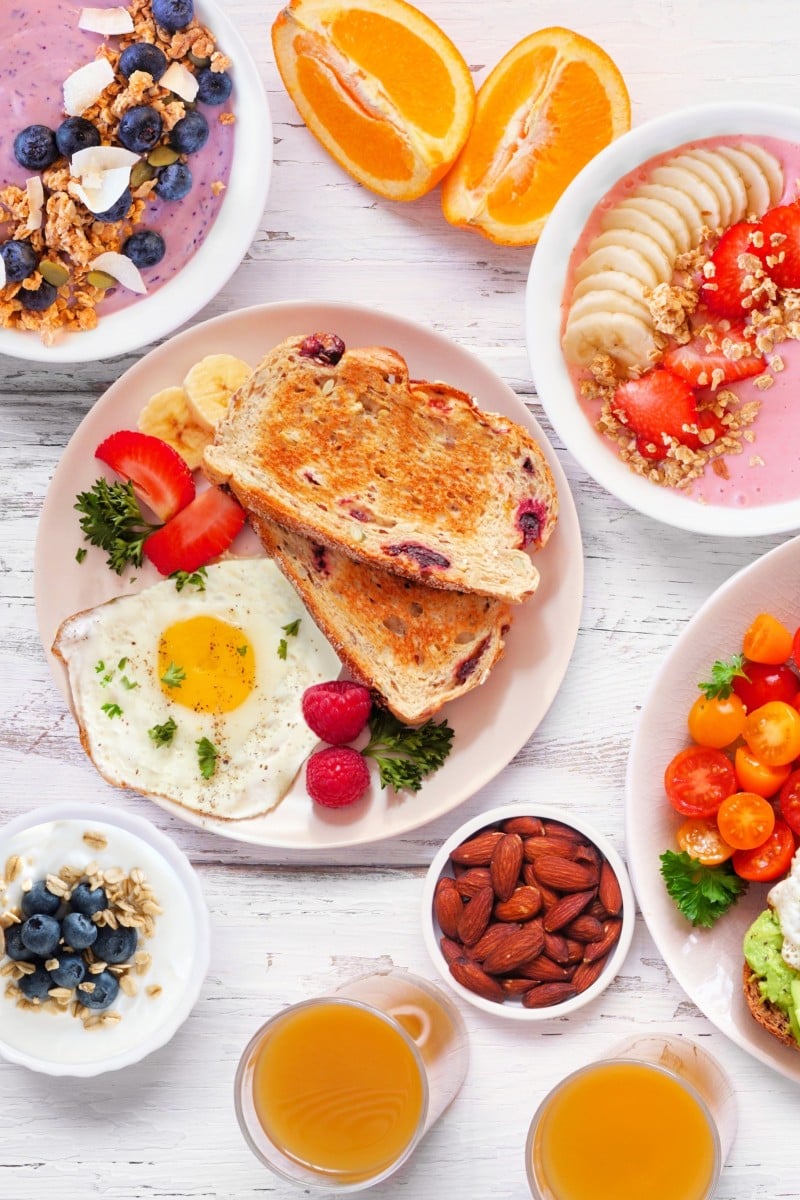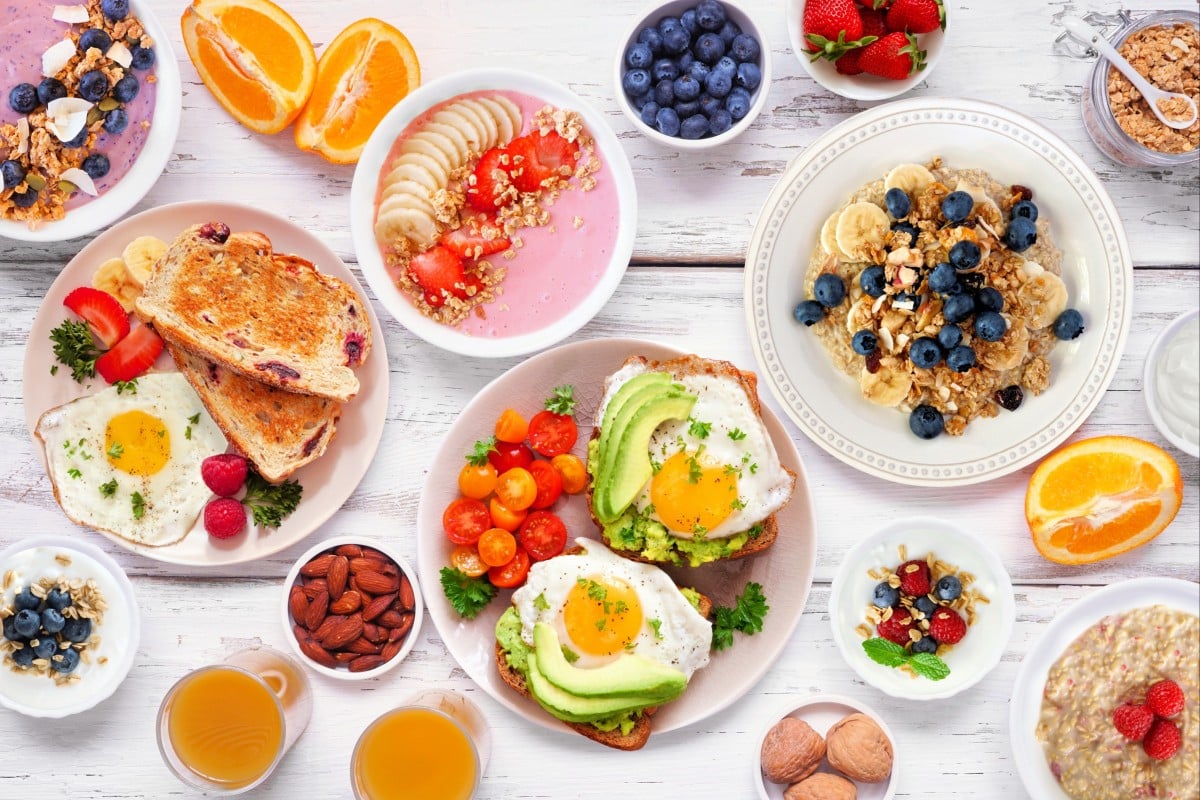
Study Buddy (Challenger): ‘Eat Better, Sleep Better’ cookbook tackles link between food and rest
This page is for students who want to take their reading comprehension to the next level with difficult vocabulary and questions to test their inference skills
 The cookbook was written by food writer and recipe developer Kat Craddock and Marie-Pierre St-Onge, a nutritionist and pioneer in the field of sleep health. Photo: Shutterstock
The cookbook was written by food writer and recipe developer Kat Craddock and Marie-Pierre St-Onge, a nutritionist and pioneer in the field of sleep health. Photo: ShutterstockContent provided by British Council
Read the following text, and answer questions 1-9 below:
[1] Anyone who has ever suffered in bed after eating three slices of pizza could surmise there is some relationship between food and sleep quality. For Marie-Pierre St-Onge – the director of Columbia University’s Centre of Excellence for Sleep and Circadian Research in New York, the United States – years of studying the relationship confirmed it.
[2] Data from large-scale population studies showed that eating a lot of saturated fat and simple carbohydrates made it harder to get deep, restorative sleep, she said. The inverse is also true. People who do not get enough sleep, for example, are more likely to be obese. “It’s a cycle of having poor sleep leading to poor dietary choices, and lower dietary quality that further propels poor sleep,” St-Onge said.
[3] If bad food could keep you awake, she wondered, could good food help you sleep? St-Onge discovered that the answer is yes. Her research led to a new cookbook, Eat Better, Sleep Better, co-written with Kat Craddock, editor-in-chief of the food magazine Saveur. The book’s recipes reflect St-Onge’s findings. People with high-fibre diets report better sleep, and the dishes rely heavily on what she calls sleep-supporting ingredients. Nuts, seeds and whole grains such as barley, buckwheat and kasha contain melatonin, a compound the body also produces naturally to regulate the circadian rhythm.
[4] Research suggests the anti-inflammatory properties of ginger and turmeric improve sleep quality, as do the phytochemicals in brightly coloured fruit and vegetables like squash, cherries, bananas and beefsteak tomatoes, St-Onge said.
[5] Besides the properties of particular ingredients, certain food combinations encourage your body to produce the hormones it needs to fall and stay asleep, she said. Tryptophan, for example, is an essential amino acid only found in food – including sunflower seeds, peanuts, pumpkin seeds, sesame seeds and soybeans – but it requires nutrients such as magnesium, zinc and B vitamins to be converted into melatonin and the “feel-good” hormone serotonin.
[6] St-Onge noted that people should not expect to fall asleep straight after loading up on certain ingredients at dinner. Food has to be processed, with chemical reactions transforming nutrients over time before absorption.
[7] Recipes were developed for every meal of the day, plus snacks and desserts, the authors said. The two then arranged them into a 28-day meal plan designed to improve sleep. Craddock said the challenge was ensuring the recipes met nutritional requirements. “My instincts are to go hard on bacon, butter, cheese and double cream, and [St-Onge] reduced a lot of that,” Craddock said.
[8] Instead of bacon, Craddock said, she could achieve similar flavours with a little olive oil and smoked paprika. “It was a bit of a dance back and forth between my more restaurant approach to making foods delicious and her nutritional goals.” The book is a practical guide to improving your diet but it might also introduce people to international ingredients and dishes beyond what they usually eat, Craddock said.
Source: Associated Press, March 5
Questions
1. Paragraph 1 discusses the …
A. impact of sleep deprivation on cognitive function.
B. history of scientific research on sleep.
C. role of sleep in regulating appetite and metabolism.
D. connection between food and sleep quality.
2. What does “the inverse” in paragraph 2 mean?
3. What is the purpose of Eat Better, Sleep Better, according to paragraph 3?
4. What do the ingredients mentioned in paragraph 3 have in common?
5. What do the fruits and vegetables containing phytochemicals in paragraph 4 have in common?
6. According to paragraph 5, consuming tryptophan alone …
A. is sufficient enough to produce melatonin and serotonin.
B. is ineffective for producing melatonin and serotonin.
C. may lead to an overproduction of other hormones.
D. may hinder the production of other essential hormones.
7. Find a phrase in paragraph 6 that refers to “eating a lot of a particular kind of food”.
8. Based on your understanding of paragraphs 7 and 8, how did the collaboration between St-Onge and Craddock benefit the development of the cookbook and its recipes?
9. Who is the intended audience for this cookbook according to the text?
Answer
1. D
2. Poor sleep can make it harder to process food/negatively affect your nutrition. (accept all similar answers)
3. to provide recipes with good food/ingredients backed by research to help you sleep better (accept all similar answers)
4. They are sleep-supporting ingredients that contain melatonin, a compound the body produces naturally to regulate the circadian rhythm.
5. They are brightly coloured.
6. B
7. loading up
8. The collaboration between St-Onge, a sleep expert, and Craddock, a food writer and editor, brought together nutritional research and culinary expertise to ensure delicious and healthy recipes that improve sleep quality. (accept all reasonable answers)
9. anyone interested in improving their diet and sleep
